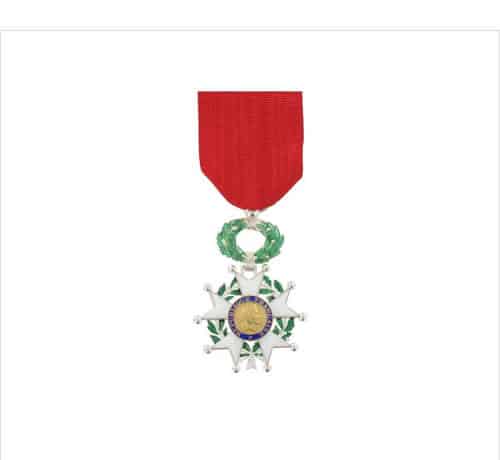Of all the decorations awarded to British soldiers in the Crimea the appointment of Sergeant David Gillam, 4th Light Dragoons, and Trumpet Major William Gray, 8th Hussars, as Chevaliers de Legion d’Honneur is of particular interest, not least as David Scott Daniell, in his History of the 4th Hussars, says “The circumstances which led to the award of Chevalier to a British N.C.O. are not known.”
Correspondence now in the Regimental Archives at Home Headquarters throws some light on these hitherto unexplained circumstances.
The first letter, dated 16th December 1855, from “Headquarters Near Sebastopol”, is from Lieutenant Colonel Robert Blaine, Military Secretary, to “Lt Gen The Honorable Sir J Scarlett KCB or The Officer Commanding Cavalry Division”.
“Sir
His Majesty the Emperor of the French having extended the number of decorations of the Legion of Honour granted to the English Forces, I am directed to inform you that there will be given of the 5th, or Chevalier Class, in addition to those already named, 12 crosses to be apportioned by you amongst the whole of the Cavalry Division. The selection of those whom you consider deserving of this honor (sic) will at your discretion include “all ranks from Major to Private according to a special merit and you will recommend those only whose distinguished prowess in conjunction with our Allies marked them out for the honor.”
The following reply, dated 31 st December 1855, came from the 4th Light Dragoons at Scutari:
“In answer to your letter dated the 2lh Dec. 1855, I have the honor to recommend Sergeant David Gillam of the 4th Light Dragoons. He has been 14 or 15 years in the Regiment, is a man of excellent character, behaved very well at the Battle of Balaklava – also at the Battle of Inkerman at which he had his jaw broken. He is at present at the Depot of the Regt.
I have the honor to be
A.Low
Captain Commanding 4th Lt Dragoons
Bt Major”
The 8th Hussars, who were by now in Ismia, sent two replies. The first was dated 29th December 1855:
The name in the margin is: “No 392 Trumpet Major William Gray 8th Hussars”
The second reply, dated 2nd January 1856 is as follows:
“With reference to your memo of the 29th Dec I have the honour to state that Trumpet Major William Gray who I recommended as the person most deserving of distinction in the 8th Hussars in my letter of the 29th Dec accompanied the Regiment to the Crimea and was present at the battles of the Alma, Balaklava and Inkerman and has continued at his duty ever since.”
The Regimental History of the 8th Hussars records that “Brigadier General Shewell received the 4th Class. Brevet Lieutenant Colonel and Major De Salis and Trumpet Major William Gray received each the 5th Class of the Legion of Honour from the Emperor of the French.”
Some biographical details of the two Non-Commissioned recipients of the Legion of Honour are known:
David J. Gillam was born in Montrose, Forfarshire and enlisted on the 17th May 1841 aged 21 years 4 months, he was 5ft 9in tall, and his trade “Servant”. He rode in the Charge of the Light Brigade as a Corporal and that day was awarded the Distinguished Conduct Medal and promoted to Sergeant. After being wounded at Inkerman, he was evacuated to Scutari on the 10th of December and invalided to England in March 1855. The Crimea Medal was presented to him by Queen Victoria on Horse Guards Parade on the 18th May 1855. He was discharged on the 21st July 1863 “being medically unfit for Her Majesty’s service. He was wounded in the jaw by a fragment of shell at Inkerman on 5th November 1854 fracturing the right side of the jaw. Fragments of bone have been removed leaving partial paralysis of the right side of the face. Worn out by long service – suffers from varicose veins of both legs and pain from old wounds. Not capable of contributing much towards his livelihood.” He was awarded a pension of 1 shilling per day and he died in Manchester on the 29th May 1866.
William Gray was born in Woolwich and enlisted on the 21st April 1832 at Westminster, aged 15 years and 1 month; he was 5ft 6in tall and had no trade. He was reassigned from Private to Trumpeter in December 1836 and was promoted to Trumpet Major on the 3rd June 1851. He was slightly wounded in the Charge and continued to serve with the Regiment until his discharge in June 1861 at Canterbury on a pension (from the 20th August) of 2 shillings per day. He wrote two letters, in July and September 1864, in support of Lord Cardigan’s claim to have reached the Russian guns at Balaklava. He spent some time in Australia prior to the 25th October 1875, when he attended the First Balaclava Banquet. He died on the 15th December 1883 at 180 Upper Street, Islington, London and is buried at Shooters Hill Cemetery, London.


